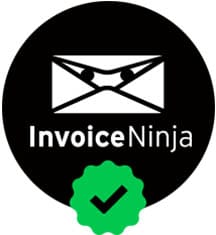
In this tutorial, we will show you how to install Invoice Ninja on Ubuntu 20.04 LTS. For those of you who didn’t know, Invoice Ninja is open-source web-based application software that can be used for invoicing, payments, time tracking, and many more. It is the best solution for invoicing and billing customers. You can easily create and send invoices online in seconds. Invoice Ninja allows you to create your own custom invoice and show the live invoice as a PDF file.
This article assumes you have at least basic knowledge of Linux, know how to use the shell, and most importantly, you host your site on your own VPS. The installation is quite simple and assumes you are running in the root account, if not you may need to add ‘sudo‘ to the commands to get root privileges. I will show you through the step-by-step installation Invoice Ninja on an Ubuntu 20.04 LTS (Focal Fossa).
Prerequisites
- A server running one of the following operating systems: Ubuntu 20.04, 18.04, and any other Debian-based distribution like Linux Mint or elementary OS.
- It’s recommended that you use a fresh OS install to prevent any potential issues.
- A
non-root sudo useror access to theroot user. We recommend acting as anon-root sudo user, however, as you can harm your system if you’re not careful when acting as the root.
Install Invoice Ninja on Ubuntu 20.04 LTS Focal Fossa
Step 1. First, make sure that all your system packages are up-to-date by running the following apt commands in the terminal.
sudo apt update sudo apt upgrade
Step 2. Installing a LAMP server.
An Ubuntu 20.04 LAMP server is required. If you do not have LAMP installed, you can follow our guide here.
Step 3. Installing Invoice Ninja on Ubuntu 20.04.
Run the following command to download the latest version of InvoiceNinja:
wget -O invoice-ninja.zip https://download.invoiceninja.com/
Then, extract the archive in the /var/www directory:
sudo mkdir -p /var/www/ sudo unzip invoice-ninja.zip -d /var/www/ sudo mv /var/www/ninja /var/www/invoice-ninja
We will need to change some folders permissions:
sudo chown www-data:www-data /var/www/invoice-ninja/ sudo chmod 755 /var/www/invoice-ninja/storage/
Step 4. Configuring MariaDB for Invoice Ninja.
By default, MariaDB is not hardened. You can secure MariaDB using the mysql_secure_installation script You should read and below each step carefully which will set a root password, remove anonymous users, disallow remote root login, and remove the test database and access to secure MariaDB:
mysql_secure_installation
Configure it like this:
- Set root password? [Y/n] y - Remove anonymous users? [Y/n] y - Disallow root login remotely? [Y/n] y - Remove test database and access to it? [Y/n] y - Reload privilege tables now? [Y/n] y
Next, we will need to log in to the MariaDB console and create a database for the Invoice Ninja. Run the following command:
mysql -u root -p
This will prompt you for a password, so enter your MariaDB root password and hit Enter. Once you are logged in to your database server you need to create a database for Invoice Ninja installation:
MariaDB [(none)]> CREATE DATABASE ninja_db; MariaDB [(none)]> GRANT ALL PRIVILEGES ON ninja_db.* TO 'ninja'@'localhost' IDENTIFIED BY 'your-passwd'; MariaDB [(none)]> FLUSH PRIVILEGES; MariaDB [(none)]> \q
Step 5. Configuring Apache.
To create the virtual host configuration file for your domain, run the following command:
sudo nano /etc/apache2/sites-available/invoice-ninja.conf
Add the following lines:
<VirtualHost *:80>
ServerAdmin admin@your_domain.com
ServerName invoice.yourdomain.com
ServerAlias www.your_domain.com
DocumentRoot /var/www/invoice-ninja/public
<Directory /var/www/invoice-ninja/public>
Options Indexes FollowSymLinks
AllowOverride All
Require all granted
</Directory>
ErrorLog ${APACHE_LOG_DIR}/your_domain.com_error.log
CustomLog ${APACHE_LOG_DIR}/your_domain.com_access.log combined
</VirtualHost>
Save and close the file. Then enable this virtual host:
sudo a2ensite invoice-ninja.conf sudo a2enmod rewrite sudo systemctl restart apache2
Step 6. Enabling HTTPS Let’s encrypt.
Enable HTTPS by installing a free TLS certificate issued from Let’s Encrypt. Run the following command to install Let’s Encrypt:
sudo apt install certbot
Next, run the following command to obtain and install a TLS certificate:
sudo certbot --apache --agree-tos --redirect --hsts --staple-ocsp --email you@example.com -d yourdomain.com
Step 7. Accessing Invoice Ninja.
Invoice Ninja will be available on HTTP port 80 by default. Open your favorite browser and navigate to https://your-domain.comor https://server-ip-address and complete the required steps to finish the installation.
Congratulations! You have successfully installed InvoiceNinja. Thanks for using this tutorial for installing Invoice Ninja on your Ubuntu 20.04 Focal Fossa system. For additional help or useful information, we recommend you check the official Invoice Ninja website.